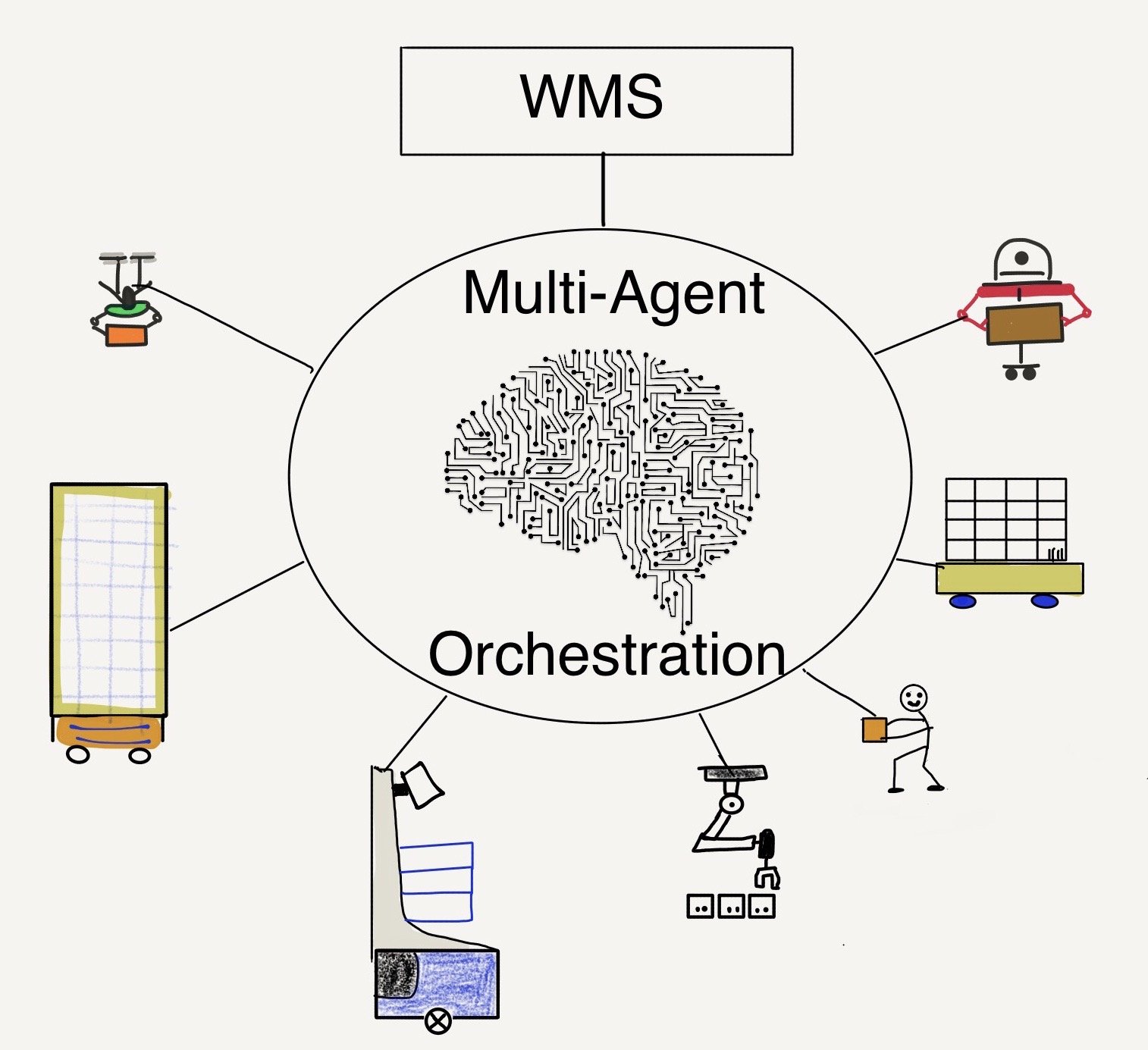Future-Proofing Your Warehouse with Multi-Agent Orchestration: Key Features to Consider
/Future-proofing your warehouse operation is essential in a world where e-commerce is booming and customer expectations are sky-high. A multi-agent orchestration platform can be a powerful tool for optimizing warehouse operations by connecting and coordinating different autonomous agents and systems in real-time to optimize workflow and maximize efficiency. However, not all multi-agent orchestration platforms are created equal. Click here for a high level overview of multi-agent orchestration platforms.
What are the key features you should be looking for in such a platform? In this post, we'll explore the critical capabilities that can help you unlock the full potential of a multi-agent orchestration platform and stay ahead of the curve in the competitive world of warehouse operations.
“As a company’s fleet of robots grows... Companies will need an orchestration capability that can assign work to the right robots based on near-real-time information and the characteristics of the activity. This will reduce the time, effort and cost to onboard new robots and will reduce support cost, ultimately making organizations more efficient because work will be assigned to the robot best-suited for the task.”
Open APIs and Hardware Agnostic
Open APIs allow you to connect the multi-agent orchestration platform to different agents and systems, regardless of vendor or technology. This gives you the flexibility to choose the best-of-breed automation solutions that suit your specific needs and requirements, while also avoiding vendor lock-in. It also provides better integration with other systems, allowing you to create a more seamless workflow across all of your automation assets. Additionally, Open APIs allow for extensibility which facilitates the integration of third-party tools and services, enabling a higher level of automation and making the solution more adaptable and scalable to meet evolving business needs.
Artificial Intelligence and Machine Learning
A multi-agent orchestration platform that incorporates Artificial Intelligence (AI) and Machine Learning (ML) can provide an overarching level of decision-making and coordination, improving the efficiency and accuracy of the warehouse operation. AI and ML enables machines and systems to perform tasks that typically require human intelligence, such as decision making, problem-solving, and pattern recognition. Large amounts of data from various sources, including the agents, sensors, and other systems can be analyzed, to identify patterns, predict future trends, and make informed decisions. For example, ML can be used to make autonomous slotting decisions - no more manual processes or dependency on spreadsheets to slot inventory. And since AI can learn continuously, it can also help identify bottlenecks in the operation, optimize the use of resources, and enable continuous improvement by learning from the data and improving the algorithms.
Scalability
A multi-agent orchestration platform should be scalable, allowing you to add or remove agents as needed. This allows you to grow at your own pace so that you can deploy exactly what you need today while maintaining the flexibility to add robots and new workflows tomorrow. For example, you might want to start small with Robotics with Person to Goods Robots for Picking, but over time harness more value out of those same bots by putting them to work for another workflow in your warehouse like Putway.
Real-Time Monitoring and Reporting
A multi-agent orchestration platform should provide real-time visibility into the status of the agents, the workflow, and the overall performance of the warehouse operation. Real-time monitoring with KPI dashboards and actionable business intelligence allow you to identify bottlenecks, inefficiencies, or anomalies in the data and take corrective action in real-time. It also provides better visibility into the performance of the warehouse operation, allowing you to optimize the workflow over time.
Flexibility
A multi-agent orchestration platform should be flexible enough to adapt to your changing business needs. It should allow you to configure the platform to your specific needs and create workflows that meet your unique requirements. A flexible platform also allows you to integrate new agents, devices, or technologies as needed, without disrupting the existing workflow. This is particularly important in a rapidly changing environment, where new technologies and business requirements are constantly emerging. A future-proof platform must be able to accommodate new technologies and changing business needs, without requiring significant reengineering or investment.
Collaboration
Human to machine collaboration is critical for safety and also allows operators to interact with the platform in a natural and intuitive way. This can be achieved through simple voice commands, touchscreens, or wearable devices, making it easy for human operators to work in tandem with the platform. Machine to machine collaboration is also essential, as it enables different agents and systems to communicate and coordinate with each other in real-time. This allows the platform to make increasingly efficient, autonomous decisions that optimizes throughput and efficiency and reduces bottlenecks.
Cloud-Native Architecture
A multi-agent orchestration platform with a cloud-native architecture allows you to deploy and scale the platform more easily. It also provides better fault tolerance and resilience, easier access to data as well as faster deployment and updates. A cloud-native architecture also provides better integration with other cloud services and APIs, allowing you to create more powerful and flexible workflows. And lastly, cloud allows you to get continuous upgrades for new functionality which means your investment appreciates over time and remains relevant and up-to-date as technology evolves.
Investing in a future-proof multi-agent orchestration platform can provide significant benefits for optimizing warehouse operations. Key features to look for in such a platform include open APIs and hardware agnosticism for flexibility and extensibility, incorporation of Artificial Intelligence and Machine Learning for improved decision-making and efficiency, scalability for growth, real-time monitoring and reporting for performance insights, flexibility for adapting to changing business needs, collaboration for effective human-to-machine and machine-to-machine interactions, and cloud-native architecture for easier deployment and scalability. By selecting a platform with these critical capabilities, organizations can unlock the full potential of automation and increase efficiency, enabling them to meet customer expectations and stay ahead of the competition.











